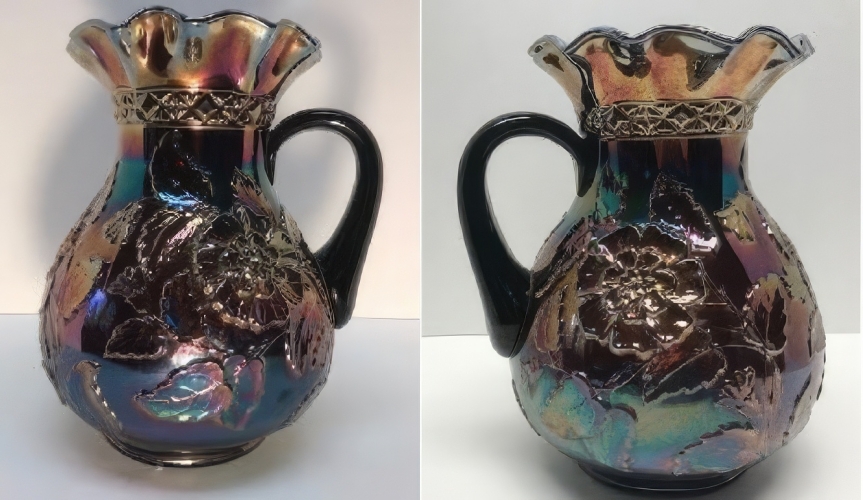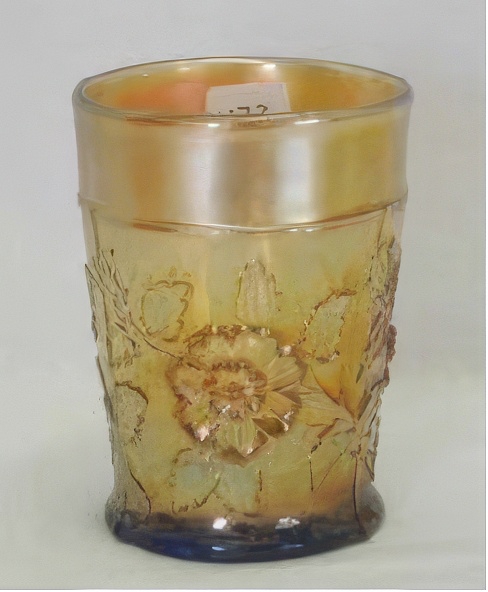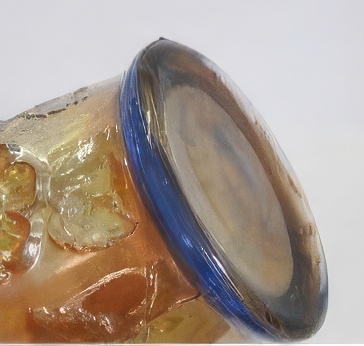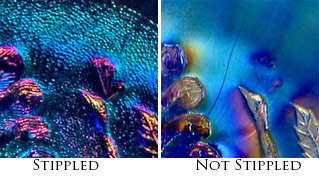Rambler Rose
By Dr. Larry Keig
Rambler Rose is a floral and leaf pattern introduced by the Diamond Glass Company in the mid-teens of the vintage carnival era. The most prominent elements in each of its three sections are an embossed open rose and the abutting leafage which overlaps mold lines.
Rambler Rose and other water sets were a staple of this era of production of Diamond and competing glassmaking operations. Diamond water sets like Rambler Rose were often offered in conjunction with another pattern in Butler Brothers and other wholesale catalogs, where two patterns were frequently paired in advertising materials.
Stippled Rambler Rose, a pattern with a similar rose but quite different foliage from Rambler Rose, is often attributed to Dugan or Diamond. At present, no evidence is available to suggest the former was made at Indiana, Pennsylvania, so the ascription is speculative, even with the likenesses between the two. (An article on Stippled Rambler Rose appears in the December 2019 issue of The Carnival Pump.).
Pitchers
A large open rose in high relief, measuring about two inches in diameter, is the focal point of each of three mold sections of the Rambler Rose pitcher. Leaves above, below, and at the sides subsume most of the remainder of the bulbous area. The leaves also hide most of the mold lines, making it appear the surface represents a rose bush, not just a spray. A curious, and unique, slightly raised diamond pattern, set within embossed bands, surrounds the neck.
The pitcher is a mold-blown cannonball, a shape that is bulbous below the neck. It is nine inches tall. The twelve-ruffled top is a bit over five and one-half inches in diameter. The diameter of the unpatterned base is four and one-fourth inches. The factory-attached handle of the dark examples matches the base color of the vessel. The handle of the marigold is clear crystal.

Two views of Kenda and Bill Jeske’s Rambler Rose Pitcher are seen above.
Pitchers are available in amethyst and cobalt blue as well as marigold. The cobalt is seen most often. Their necks are usually the most iridescent area, their bodies often meagerly iridized. None have been reported in marigold over powder blue or other After Glow colors. The illustrated dark blue one, from the Jeske collection, is a pretty one.
Tumblers
If the pattern on the pitcher represents a rose bush, that of the tumbler looks like three sprays picked from the plant, one spray per mold section. Each spray consists of a highly embossed large, approximately one-inch rose surrounded by leafage. The largest leaves are found in the northwest and southeast quadrants. The tips of these leaves extend over the mold lines, the one in the southeast more so than the other. The leaves to the northeast and southwest are smaller and confined entirely to the section from which they originate.
Tumblers are four inches tall. They have a top diameter of two and three-fourth inches and a base diameter of two and one-half inches. Neither the interior nor the underside of the base is patterned.

Marigold, cobalt, and amethyst tumblers can be found with little difficulty, the blue the most available color.

This powder blue Rambler Rose tumbler sold at a Seeck Auction and is pictured on the Hooked on Carnival site.
Tumblers are also known in what amounts to an After Glow powder blue. These are hard to find and probably products of the late Diamond years. Iridescence on tumblers in this pattern is highly variable. Base color of the marigold is often poor.
Water Sets
Complete water sets can be found more easily than most Diamond’s sets. The cobalt are seen more often than the marigold and amethyst. No powder blue pitcher has been reported, suggesting only tumblers were produced in this base color and surface treatment.
This article first appeared in the ICGA Pump in the March 2020 issue and is reprinted with permission.

